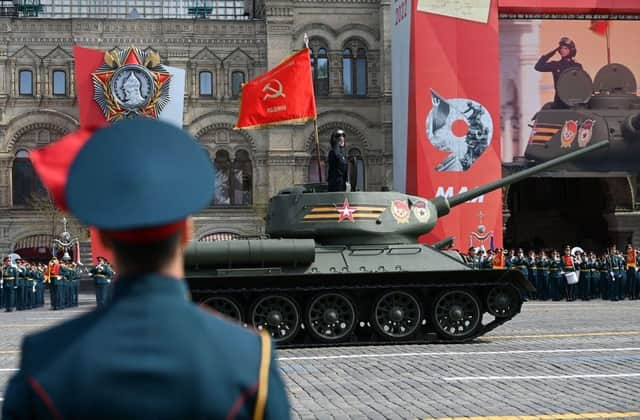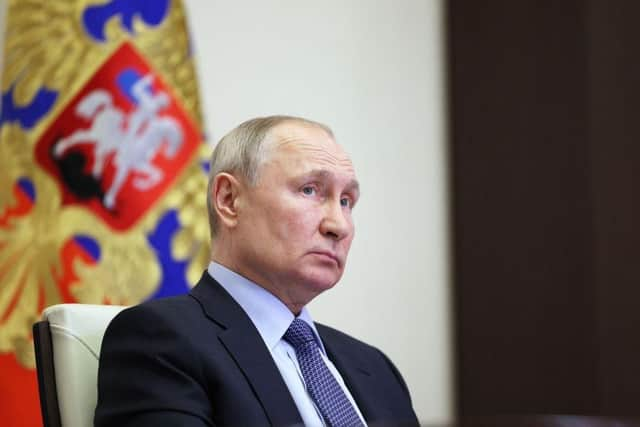The biggest irony of Russia’s Victory Day event? Where its solitary parade tank was made


Whether Tuesday’s Victory Day celebration would go ahead at all was a matter of great debate.
The fact it did is evidence that Vladimir Putin has not yet given up in his Emperor’s New Clothes-style attempt to change the narrative around his invasion of Ukraine.
Advertisement
Hide AdAdvertisement
Hide AdAddressing the Russian people – and indirectly, the West – he proclaimed that “a real war had been unleashed” against Russia in light of the West’s “untamed ambitions”, handily forgetting that it was he, on 24 February 2022, who ordered a full scale assault on Ukraine.


"Today civilisation is once again at a decisive turning point," the leader said, ominously, at Moscow's annual commemorations celebrating the defeat of Nazi Germany in the Second World War. "A real war has been unleashed against our Motherland."
A key date on the Kremlin’s calendar, the event, ostensibly to mark the anniversary of victory over the Nazis in World War Two, Victory Day is usually an impressive display of Russian power and military might.
Even last year’s Victory Day, occurring less than three months after the Russian invasion of Ukraine began, went ahead as usual: showcasing the best of the tanks, armoured vehicles and military personnel that Moscow had to offer.
This year, however, questions over the safety of the event overshadowed it – the cynics among us might argue, somewhat intentionally. In the run-up to the parade, the Russian government cited the incident last week, when it claimed a Ukrainian drone infiltrated its air defences and attacked the Kremlin, in what it called a direct assassination attempt on Russian president Vladimir Putin. Ukraine has denied involvement in the incident, while others have claimed it to be a “false flag” attack, set up intentionally to frame Ukraine.
Whatever the true origins of the drone attack, Russian authorities insisted security would need to be tighter around the parade. It might not, they warned, be able to go ahead at all.
This, of course, was a useful excuse for the scaled-down operation which limped through Moscow’s Red Square on Tuesday morning. It was one of the smallest in Russian history, taking just ten minutes.
Of the 51 vehicles which took part, according to counts made by various analysts, there was only one tank. Some analysts pointed out that there are more (captured) Russian tanks in Kyiv city centre than there were in Moscow on Tuesday.
Advertisement
Hide AdAdvertisement
Hide AdThe overall vehicle count was substantially down on last year, when 131 vehicles were paraded through Moscow, and 2021, when there were 197. For the second year in a row, there was no flypast. Meanwhile, the walking part of the parade mainly consisted of cadets and students of military universities, not military staff.
Russian authorities failed to publish information about the parade's participants, unlike in previous years, which is perhaps telling in itself.
Of course, it is no surprise that Russian tanks are otherwise engaged while the country is at war (sorry, taking part in a “special military operation”).
However, the biggest hit of irony came with the identification by military historians of the single, solitary tank which participated in the parade. The vehicle, a World War Two-era T-34, named "Prіde", was built not in Russia, but in Kharkiv, Ukraine – then a part of the Soviet Union.
Comments
Want to join the conversation? Please or to comment on this article.
